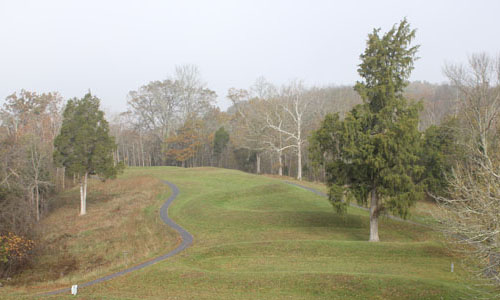The Moundbuilders' Art: A Confluence of 'Ingenuity, Industry, and Elegance'
The era of the mound builders in prehistoric America, c. 500 B.C. - 1650 A.D., is geographically centered in what is now southern Ohio, and parts of Kentucky, West Virginia, Indiana, and Pennsylvania, collectively known as the Ohio River Valley.
This geographical area has been divided into four distinct archaeological periods: Early Woodland (c. 500 B.C. - 50 B.C.); Middle Woodland (c. 50 B.C. - 400 A.D.); Late Woodland (c. 400 A.D. - 1000 A.D.); and Late Prehistoric (c. 1000 A.D. - 1650 A.D.). Three periods, the Early and Middle Woodland and the Late Prehistoric, will be covered in this exhibition: the Late Woodland is still poorly known and contained little to no known mound building activity. Three main cultures will be examined: the Adena, in the Early Woodland; the Hopewell, in the Middle Woodland; and the Fort Ancient, in the Late Prehistoric period. Although there were a diverse range of cultures thriving coterminously in the rest of Ohio, Kentucky, West Virginia, Indiana, and Pennsylvania, some of which crafted fine effigy mounds which still survive today, the Adena, Hopewell, and Fort Ancient cultures are the best known examples of the fine tradition of mound building.
There were once an estimated 10,000 mounds and earthworks in the Ohio River Valley built by the three aforementioned cultures. Today, roughly 1,000 survive due to the efforts of private landowners and federal agencies, all of whom share a drive to preserve these remaining fragile treasures for future generations.
